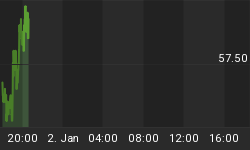As expected, last week's holiday infested market action provided little clarity. The sentiment picture remains relatively unchanged. Nonetheless, there was a market moving event, and the "default in Dubai" will likely leave investors with one of two conclusions: 1) coordinated efforts by central bankers to re-liquify the world economy are likely to continue as bad news means good news -- the proverbial punch bowl will be with us for awhile; or 2) the house of cards - otherwise known as the recovery - is beginning to look a little wobbly; central bankers, no matter how hard they try, are unable to fight the forces of deleveraging. This contagion just won't go away so easily.
The "default in Dubai" is interesting as this now becomes a test of central banker resolve to keep the balls in the air. The US equity rally has been looking a little weak over the past two months and this could be the scare that moves a lot of money to the sidelines. Where there is one cockroach, there is bound to be others. But I suspect this will be passed off as nothing more than a hiccup, and will unlikely derail the bullish fervor. The only thing that can do that is lower prices.
What the "default in Dubai" says is that risks are mounting. This is not "wall of worry" nonsense. This is just common sense after a 60% plus move in the S&P500 over 8 months. Common sense often doesn't work in the markets, but fundamentals, valuations, technicals, and sentiment do not support higher prices. Dollar devaluation and ongoing Federal Reserve complacency are reasons why stocks can go higher, but this will have its limits I suspect. It is not a reason why I would be a buyer of equities. I am just waiting for someone on CNBC to utter the "R" word: resilient. When you hear that word, make sure you run for the exits.
From my data driven perspective, I will state what I said last week and for many weeks before that:
"The major equity indices are in a topping process. This implies a trading range at best. There is risk of a down draft as markets "fueled" by the proverbial "liquidity" are prone to quick sell offs. The outlier trade is a market blow off or a spike in prices, and I do not rule this possibility out because of the ongoing downtrend in the Dollar Index. It is possible but it is not the high odds play. This is not the market environment that will take you from here to there."
The "Dumb Money" indicator, which is shown in figure 1, looks for extremes in the data from 4 different groups of investors who historically have been wrong on the market: 1) Investor Intelligence; 2) Market Vane; 3) American Association of Individual Investors; and 4) the put call ratio. The "Dumb Money" indicator shows that investors are extremely bullish.
Figure 1. "Dumb Money" Indicator/ weekly
The "Smart Money" indicator is shown in figure 2. The "smart money" indicator is a composite of the following data: 1) public to specialist short ratio; 2) specialist short to total short ratio; 3) SP100 option traders. The Smart Money indicator is neutral.
Figure 2. "Smart Money" Indicator/ weekly
Figure 3 is a weekly chart of the S&P500 with the InsiderScore "entire market" value in the lower panel. From the InsiderScore weekly report we get the following two insights: 1) S&P500 weekly score falls to 30 month low; 2) buyers are not showing the type of conviction that sellers are.
Figure 3. InsiderScore Entire Market/ weekly
Figure 4 is a daily chart of the S&P500 with the amount of assets in the Rydex Money Market Fund in the lower panel. When the money market fund is flush with cash, one can assume that the Rydex timers (like market participants in general) are fearful of market losses. From a contrarian perspective, these are good buying opportunities. When the amount of assets are low (like now), these market timers are all in; one should be on the lookout for market tops. There is little buying power left. As of Friday's close, assets in the money market fund are off the lowest of the year seen in the previous week.
Figure 4. Rydex Money Market/ daily
















